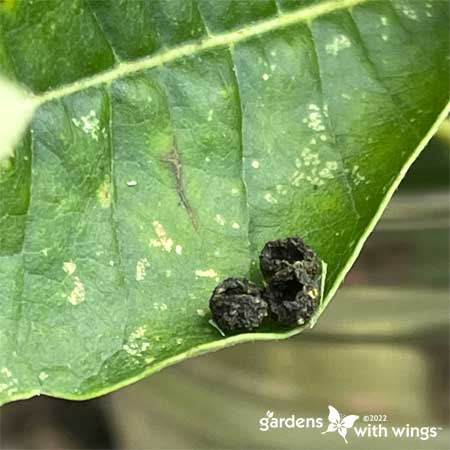Abdomen -The rear part of an insect’s body containing the heart, reproductive organs and most of the digestive system.
Antennae – Slender organs on a butterfly’s head used for smelling and sensing.
Caterpillar – After hatching from the egg, the worm-like second stage of a butterfly’s life, also called larva.
Chrysalis – The hard case formed at the third stage of a butterfly’s life, also called pupa.
Frass – Those little brown balls are caterpillars’ waste.

Flight Range – The geographic area where a butterfly is most likely to be seen.
Forewings – The two upper wings of the butterfly closest to the head.
Hindwings – The wings at the back of the butterfly closest to the abdomen.
Host Plant – The plant on which the female butterfly lays her eggs. Usually, the host plant is the food for the butterfly’s larvae.
Larva – The caterpillar or second stage of the butterfly life cycle.
Metamorphosis – The transformation that takes place inside the chrysalis from caterpillar to adult butterfly.
Nectar Plant – A plant favored by a butterfly as a food source.
Proboscis – The tube at the head of the butterfly through which it draws nectar and other nutrients.
Puddling – The practice of gathering at mud puddles or moist areas, usually by adult males, to obtain moisture, nutrients and salts.
Pupa – The third stage of the butterfly life cycle also known as a chrysalis in which metamorphosis takes place.




